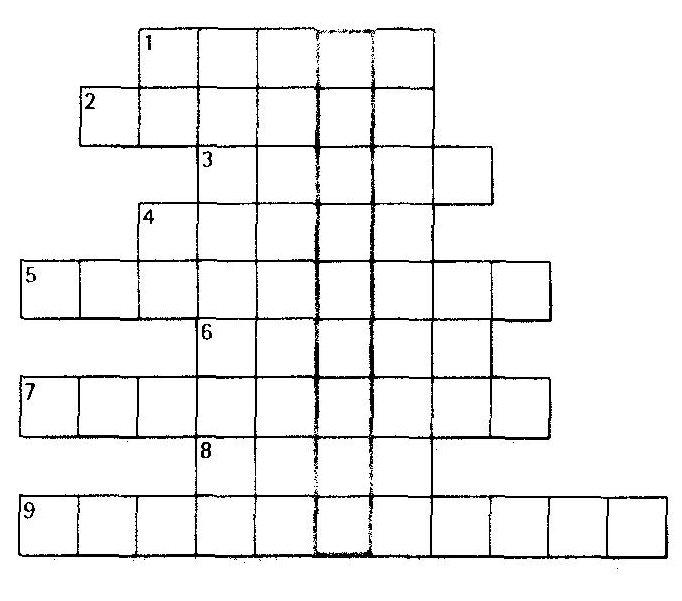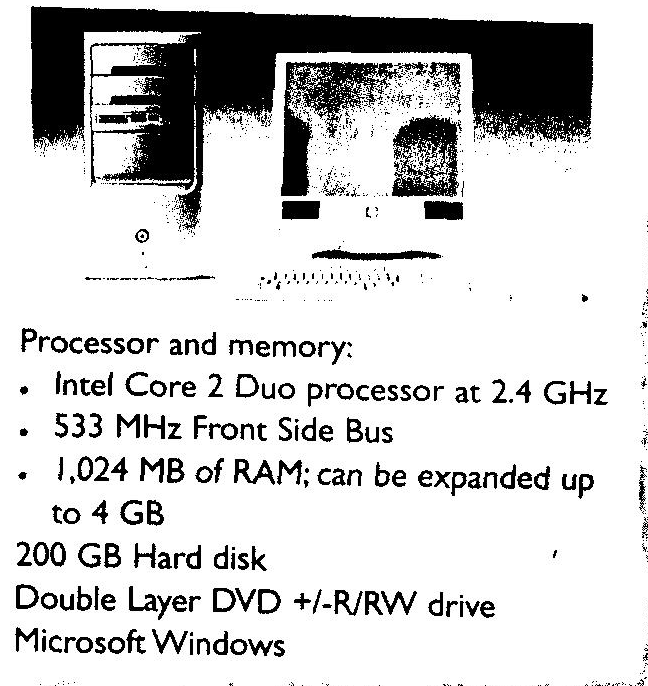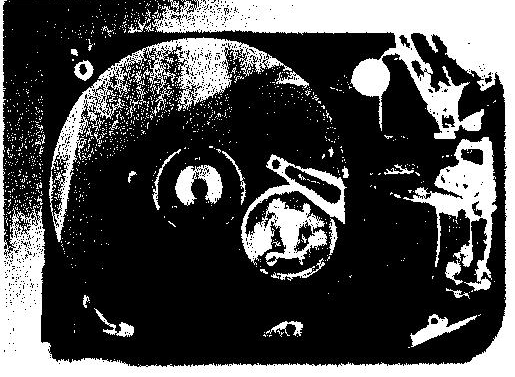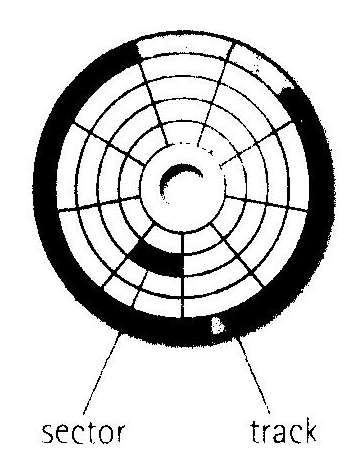ВУЗ: Не указан
Категория: Не указан
Дисциплина: Не указана
Добавлен: 14.10.2024
Просмотров: 109
Скачиваний: 0
СОДЕРЖАНИЕ
Word-building. Common prefixes. Common suffixes.
It is useful to know how to build up word families by adding suffixes. Look at these examples:
Word Combinations. Simple Tenses. Everyday English and Technical English.
The neologisms. Continuous Tenses. Computers in our life.
The numeral. Perfect Continuous Tense. The Founder of Microsoft.
To sum up furthermore moreover secondly finally however
2) Give the definition of the terms
Three basic steps of the computer
Interacting with your computer
Lesson 12-14. Computer Memory. Ram. Rom. The Use of Active and Passive Voice.
Modal verbs and their equivalents.
The Power of Programs. Modal Verbs with Passive Infinitive
Lessons 4-5. Software. Application Software
Об'єктний інфінітивний зворот. Складний додаток.
Об'єктний інфінітивний зворот вживається після дієслів:
Суб'єктний інфінітивний зворот
Lesson 12-14. Computer Memory. Ram. Rom. The Use of Active and Passive Voice.
*Task I. Learn the new vocabulary.
|
built in – вбудований to affect – впливати permanent – постійний temporary – тимчасовий software – програмне забезпечення
|
random – довільний випадковий instantly – негайно to fill in – заповнювати internal – внутрішній external – зовнішній |
Task II. Pay your attention to use synonyms and antonyms:
|
1) permanently – regularly for example – for instance set – collection save – store to work – to operate screen – display |
2) permanent – temporary external – internal to turn on - to turn off appear – disappear limited – unlimited outside – inside easily - hard |
Task III. Translate the linking phrases:
no matter, that is, at some point, when that happens, before it happens, that’s why, no matter how, while you are working, through all the data
Task IV. Translate English word combination into Ukrainian
A built-in set of instructions, to do various mathematical computations, the instructions built into ROM, to follow the instructions, to hold the software, input data, use the keyboard to enter the data, instantly go right to any of stored data, to change input data, add a missing datum, correct misspelling, temporary memory, turn on(off), save data, to store data externally, to fill the memory, internal storage, external storage.
**Task V. Read and translate the text
Computer Memory
The computer has two kinds of memory. One kind is called read-only memory, or ROM, and it is not affected when you turn off the machine. ROM is permanent memory. The second kind of memory is called random-access memory, or RAM.
ROM (read-only memory). A computer has to have a built-in set of instructions. It has to know what to do when it is turned on. Different computers have different kinds of instructions in ROM, but some instructions are standard and necessary for all computers. For example, all computers have to know how to do various mathematical computations.
The instructions built into ROM are there permanently. The computer can "read", or follow, the instructions in ROM, but it cannot change them or add to them. That's why the memory is called "read-only".
RAM (random-access memory). RAM is the memory that holds the software and other input data while you are working on them. When you used the keyboard to enter the names of the picnickers, you put the names in RAM. This kind of memory is called random access because instantly go right to any part of the stored data or program. You do not have to run through all the data stored up to the part that you want to see. You can easily change input data that is stored in RAM. For instance, you can add a missing name or correct a misspelling. However, many commercial software producers write their programs in such a way as to make it very difficult for you to change them.
RAM is temporary memory. When you turn off the computer, everything that has been stored in RAM disappears. If you want to save data that is stored in RAM, you have to store it externally — that is, outside the computer. As you know, you can store programs and data on disk.
The amount of RAM varies from one computer model to another. But no matter how much RAM your computer has, it is not unlimited. At some point, the memory will be filled. When that happens (or even before it happens) you will need to transfer data from the filled internal storage to some form of external storage, such as a disk.
|
ROM: read-only memory Permanent Not affected when computer is turned off Instructions can be “read” from it but cannot be “written” to it |
RAM: random-access memory Temporary Information is cleared from it when computer is turned off. Instructions can be both “read” and “written” to it |
*Task VI. Give the translation to the following word-combinations:
Виключати машину, переводити дані, зберігати ззовні, слідувати інструкціям, забезпечувати роботу програмного забезпечення, різні математичні обчислення, заповнити пам'ять, постійна та тимчасова, зберігати дані, внутрішнє збереження, виправити неправильне написання слів
**Task VII. Answer the questions on the text:
1. What is the difference between RAM and ROM?
2. Is ROM affected when you turn off the computer? Why?
3. What kind of memory is RAM?
4. Can you change data stored in RAM ?
5. How can you save data stored in RAM ?
Task VII Read the following sentences, define the verb tenses. Re-write the sentences in Passive.
1.Computer usually displays the results on its screen or on paper. 2. The calculator has processed the same information in different ways. 3. He is doing a very complex calculation with the help of computer now. 4. They transferred the data from the filled internal storage . 5. He said , commercial producers will write their programs in such a way as to make it difficult to change. 6. He’ll use the keyboard to enter the names of picnickers. 7. It becаme clear that somebody had changed the program. 8. When I turned off the program, everything disappeared. 9.You must transfer the data from the filled internal storage to a disk 10. They have grouped the information according its importance.
***Task VIII. Speak about computer memory, the difference between RAM and ROM
***Task VIII. Speak about computer memory, the difference between RAM and ROM
**Task IX Read the following sentences, define the verb tenses. Re-write the sentences in passive.
1.Computer usually displays the results on its screen or on paper. 2. The calculator has processed the same information in different ways. 3. He is doing a very complex calculation with the help of computer now. 4. They transferred the data from the filled internal storage . 5. He said , commercial producers will write their programs in such a way as to make it difficult to change. 6. He’ll use the keyboard to enter the names of picnickers. 7. It becаme clear that somebody had changed the program. 8. When I turned off the program, everything disappeared. 9.You must transfer the data from the filled internal storage to a disk 10. They have grouped the information according its importance.
**Task X. Put the Verbs in brackets in the required forms of the Tense and Voice and translate into Ukrainian
1. He (not to participate) in the work of any international scientific conference yet. 2. They just (to invite) to participate in the work of a seminar on some urgent problems of biophysics. 3. In publications of that institute much space (to devote) unusually to problems of space research. 4. The Russian Academy of Sciences (to open) in 1725.5. He (to appoint) head of Doctor in mathematics. 6. Don't switch on the light. The experiment (to carry out) in complete darkness.
**TaskXI Find the Predicates in the Passive Voice and translate the sentences into Ukrainian.
1. In the past centuries many universities were controlled by the church. 2. In the seventeenth century learned societies were organized in England and France. 3. In scientific monographs much space is often devoted to experimental work. 4. Groups of learned men were grouped together by their scientific interests.
**Task XII. Translate the following sentences into Ukrainian paying attention to the Predicate in the Passive Voice.
1. The explorers were shown the nearest way to the river. 2. The design of the engine was given much attention to. 3. The explorers were seen not far from the camp of the expedition. 4. The student was asked several difficult questions. 5. She was told to leave the laboratory. 6. The students are taught English at our Institute. 7. The engineers of our laboratory were offered new research work. 8. He was helped while translating the article.
*RAM and ROM
When you run a program, the CPU looks for it on the hard disk and transfers a copy into the RAM. RAM (random access memory) is temporary or volatile, that is, it holds data while your PC is working on it, but loses this data when the power is switched off.
However, ROM (read only memory) is permanent and contains instructions needed by the CPU; the BIOS (basic input/output system) uses ROM to control communication with peripherals, e.g. disk drives.
The amount of RAM determines the number of programs you can run simultaneously and how fast they operate. It can be expanded by adding extra RAM chips.
**Units of memory
The electronic circuits in computers detect the difference between two states: ON (the current passes through) or OFF (the current doesn't); they represent these states as 1 or 0. Each 1 or 0 is called a binary digit or bit. Bits are grouped into eight-digit codes that typically represent characters (letters, numbers and symbols). Eight bits together are called a byte. For example, 01000001 is used for the character A. Computers use a standard code called ASCII for the binary representation of characters.
In order to avoid complex calculations of bytes, we use bigger units. A kilobyte (KB) is 1,024 bytes; a megabyte (MB) is 1,024 kilobytes; a gigabyte (GB) is 1,024 megabytes; a terabyte (TB) is 1,024 gigabytes. We use these units to describe the RAM memory, the operating capacity of disks and the size of a program or document.
**Look at A and B opposite. Then match the sentence beginnings (1-6) with the correct endings (a-f).
|
a. areas within the CPU. b. you can't make changes to it. c. controls the way instructions are executed, d. the computer is turned off. e. coordinates the other parts of the computer, f. calculations: add, subtract, multiply and divide. |
**Solve the clues and complete the puzzle with words from the opposite page.
-
Intel are used in many computers.
-
E
 ach
0 or 1 is called a bit, short for
ach
0 or 1 is called a bit, short for
digit.
-
Special cards can be inserted into expansion
-
A controls the timing within the PC by
sending signals to synchronize its circuits and operations.
-
T he processor speed is measured in
-
carry signals between different parts of a
PC.
-
cards improve the computer's performance.
-
The uses ROM to control the input/output
of data.
-
l he main printed circuit board is called the
D own:
The brain of a computer
own:
The brain of a computer
**Read this product description and answer the questions below.
-
How fast is the CPU?
-
Which term is used to describe the CPU data bus?
-
How much RAM does the computer have?
-
Can you add extra RAM chips? How many?
Disks and drives
**Magnetic storage
M agnetic
devices store data magnetically. A disk drive spins the disk at high
speed and reads its data or writes new data onto it.
agnetic
devices store data magnetically. A disk drive spins the disk at high
speed and reads its data or writes new data onto it.
-
A floppy disk drive uses 3.5 inch diskettes which can only hold 1.44 MB of data; it's often called A: drive and is relatively slow.
-
Most PCs have one internal hard disk, usually called C: drive, which can hold several gigabytes of data. It's used to keep the operating system, the programs and the user's files easily available for use.
W hen
you format a disk, or prepare it for use, its surface is divided into
concentric circles called tracks. Each track is further divided into
a number of sectors. The computer remembers where information is
stored by noting the track and sector numbers in a directory.
hen
you format a disk, or prepare it for use, its surface is divided into
concentric circles called tracks. Each track is further divided into
a number of sectors. The computer remembers where information is
stored by noting the track and sector numbers in a directory.
The average time required for the read/write heads to move and find data is called access time; it is measured in milliseconds (ms). Don't confuse 'access time' with 'transfer rate', the rate of transmission of data from the disk to the CPU (e.g. 15 megabytes per second).
-
A portable hard drive is an external unit with the drive mechanism and the media all in one sealed case. You can use it to make a backup, a spare copy of your files, or to transport data between computers.
Optical storage
Optical drives use a laser to read and write data, so they are not affected by magnetic fields; but they are slower than hard drives. Modern DVD recorders accept all CD and DVD formats.
|
CDs (compact discs) can store up to 650-700 MB of data.
|
DVDs (digital versatile discs) are similar in size to CDs (both are 1.2 mm thick), but they differ in structure and capacity. DVDs have more tracks and more pits (tiny holes) per track, and can store from 4.7 GB to 17 GB of data, movies, high-definition sound, etc., so they will probably replace CDs. DVD formats include:
|
Portable DVD players let you watch movies or TV, play games and listen to music, wherever you are. They usually run on batteries, have a widescreen (rectangular 16:9 format) LCD and support multi-format playback, allowing you access to many file formats including DVD video, JPEG pictures, MP3 music, etc. They have two built-in stereo speakers, or headphones if you don't want to disturb other people.
Removable flash memory
Flash memory is solid-state, rewritable memory; it is non-volatile, so it retains data when the power is turned off. This explains its popularity in small devices.
-
Flash memory cards such as Compact Flash or Secure Digital are found in cameras, PDAs and music players.
-
Flash drives, also known as thumb or pen drives, are connected to a USB port of the computer. They let you save and transfer data easily.
**Read A opposite. Choose a term from this word to complete the sentences below.
-
The first rule of data storage is to make a of all important files.
-
A……………..is slower than a hard drive and can only hold 1.44 MB disks.
-
The………….inside your PC is made of aluminium alloy covered with a magnetic coating. This makes the disk itself a rigid plate, hence its name.
-
The are circles around a disk and the are segments within each circle.
-
This hard drive is a 60 GB (BM model with a fast of 8s).
-
The is the rate of transmission of data from the disk to the CPU.
-
This is usually described in megabytes per second.
-
Apple's I Pod music player can double as a for transporting computer data.
**Look at the opposite page and find:
-
the CD and DVD formats that can be written to by the user only once
-
the CD and DVD formats that can be read by a computer but not written to
-
the type of cards used in digital cameras
-
a type of drive that plugs into a USB port and lets you share photos and music with friends
-
the memory without moving parts; it is erasable, non-volatile and used in small devices
-
the expression that means to 'initialize a disk and prepare it to receive data
***Complete this product description with words from B opposite.
The Panasonic DVD-LS91 is a top-of-the-range (1) which provides pure entertainment
wherever you go. It has a big 9 inch built-in (2) LCD, so you can really enjoy movies. The built-in stereo speakers allow you to listen along, or if you want to listen alone, just plug in a pair of (3)
This portable machine provides (4) so you can play DVD Audio/Video, CD-R/RW, DVD-RAM, DivX and MP3 files. Its compact design features a built-in rechargeable 6 hour battery pack. The DVD-LS91 allows 6 hours of playback, and provides a perfect way to entertain yourself and your kids during long trips.

